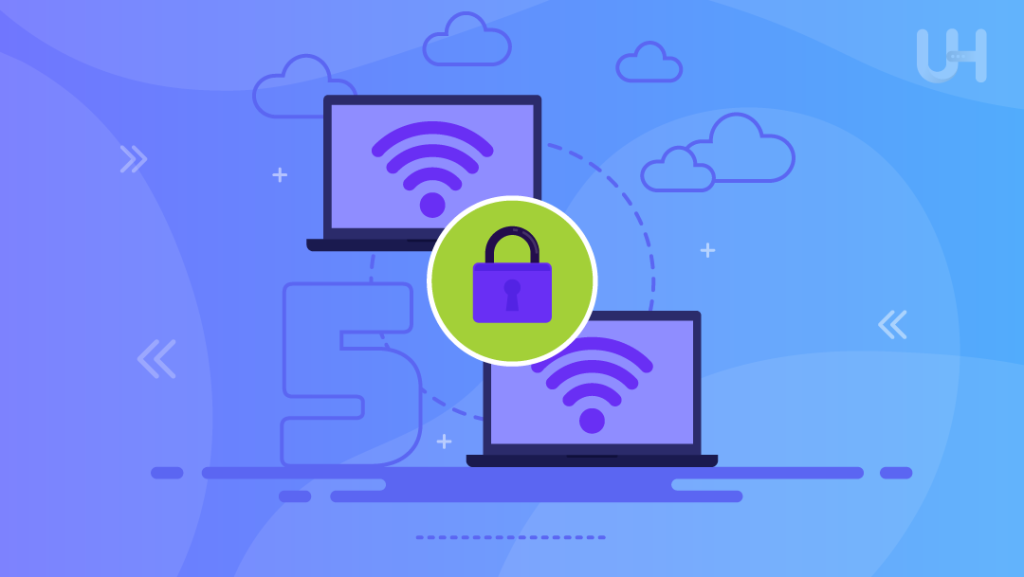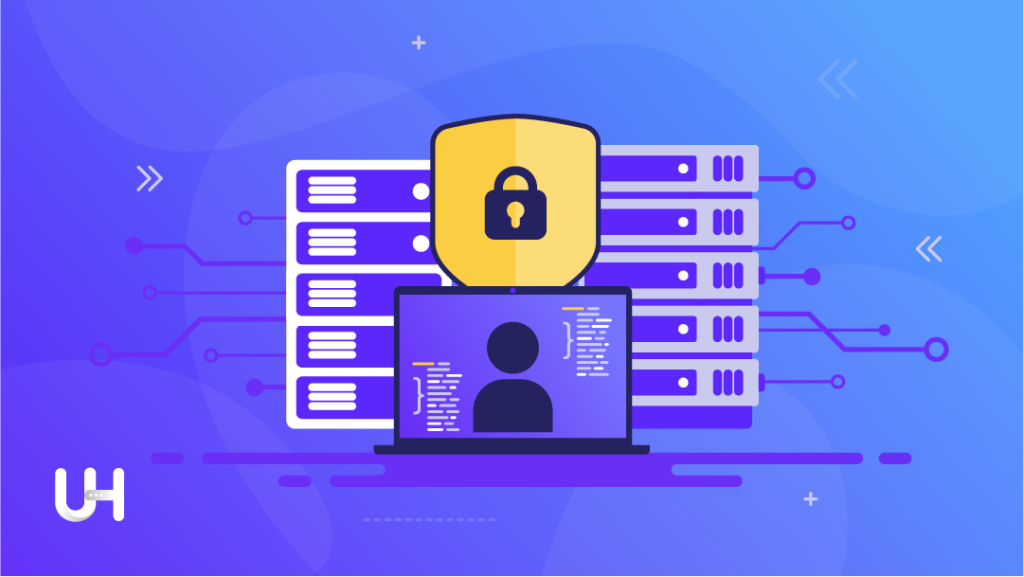
Remote Desktop Protocol (RDP) serves as a cornerstone for remote access, enabling individuals and organizations to connect to computers or servers from a distance. With the increasing prevalence of remote work and the globalization of businesses, RDP has become an indispensable tool for accessing critical resources, collaborating with remote teams, and managing systems efficiently.
While RDP offers unparalleled convenience and flexibility, its widespread use also presents significant security challenges. The very nature of remote access opens doors to potential threats, ranging from unauthorized access attempts to sophisticated cyberattacks. As such, prioritizing RDP security is paramount to safeguarding sensitive data, protecting systems from exploitation, and preserving the integrity of digital infrastructure.
In this blog, we will discuss the intricacies of RDP security, exploring the best practices and measures essential for fortifying your RDP server against evolving threats. By understanding the significance of RDP security and implementing proactive strategies, you can mitigate risks, enhance resilience, and ensure secure remote access for your organization’s operations.
Importance of RDP Security
Remote Desktop Protocol (RDP) servers are integral components of modern IT infrastructures, facilitating remote access to critical systems and resources. However, along with their undeniable benefits, RDP servers also pose significant risks and vulnerabilities that can expose organizations to various security threats. Understanding these risks and emphasizing the importance of securing RDP connections are essential steps in safeguarding sensitive data and preventing unauthorized access and data breaches.
Potential Risks and Vulnerabilities
- Brute Force Attacks: RDP servers are frequent targets for brute force attacks, where malicious actors attempt to gain unauthorized access by systematically trying different username and password combinations.
- Credential Theft: Compromised RDP credentials can lead to credential theft. It allows attackers to impersonate legitimate users and gain unrestricted access to systems and networks.
- Exploitation of Vulnerabilities: Vulnerabilities in RDP implementations or outdated software versions can be exploited by attackers to execute remote code execution (RCE) attacks. It enables them to compromise systems and deploy malware.
- Man-in-the-Middle Attacks: Without proper encryption and authentication measures, RDP connections are susceptible to interception by attackers. It facilitates man-in-the-middle (MITM) attacks where sensitive information can be intercepted and manipulated.
- Data Breaches: Insecure RDP configurations or compromised credentials can result in data breaches. It leads to the unauthorized disclosure of sensitive information, financial loss, and reputational damage for organizations.
Importance of Securing RDP Connections
- Prevention of Unauthorized Access: Securing RDP connections helps prevent unauthorized individuals or malicious entities from gaining access to sensitive systems and resources. It reduces the risk of data theft, manipulation, or destruction.
- Protection of Sensitive Data: By implementing robust security measures for RDP, organizations can protect sensitive data. It includes intellectual property, customer information, and financial records from unauthorized access and disclosure.
- Mitigation of Cybersecurity Threats: Strengthening RDP security helps mitigate cybersecurity threats such as malware attacks, data breaches, and insider threats, enhancing the overall resilience of IT environments.
- Compliance Requirements: Compliance standards and regulations often mandate the implementation of specific security controls for remote access technologies like RDP. Adhering to these requirements ensures regulatory compliance and mitigates legal and financial risks for organizations.
- Preservation of Business Continuity: Secure RDP connections are essential for maintaining business continuity, enabling employees to access critical systems. Also, during unforeseen events such as natural disasters or public health emergencies.
In short, vulnerabilities associated with RDP servers and prioritizing the security of RDP connections are fundamental steps. It helps safeguard organizational assets, maintain regulatory compliance, and preserve business continuity in an increasingly interconnected digital landscape. By implementing robust security measures and adopting a proactive approach to RDP security, organizations can mitigate risks. Moreover, they can protect sensitive data and fortify their defences against evolving cybersecurity threats.
5 Best Practices for RDP Security
Keep your RDP Server updated
Regular updates are paramount in maintaining the data security on your server. Each update typically includes patches for known vulnerabilities, fixes for software bugs, and improvements in security features. Failing to keep your RDP server updated exposes it to potential exploits and compromises. Also, making it an easy target for cyber threats.
Importance of Regular Updates
- Patch Vulnerabilities: Updates often address security vulnerabilities discovered in RDP software. Hackers actively exploit these vulnerabilities to gain unauthorized access or launch attacks. By applying updates promptly, you close these security loopholes and reduce the risk of exploitation.
- Enhance Security Features: Software updates may introduce new security features or strengthen existing ones. These enhancements help bolster your RDP server’s defenses against evolving cyber threats. Also, provides additional layers of protection for your data and systems.
- Ensure Compatibility: Updates ensure that your RDP server remains compatible with the latest operating systems, applications, and security protocols. Compatibility issues can expose your server to instability or interoperability issues, compromising its functionality and security.
Guidelines for Implementing an Update Schedule
- Regular Monitoring: Establish a routine for monitoring software vendors’ release notes and security advisories. Stay informed about the latest updates and their impact on your RDP server’s security.
- Test Updates in a Controlled Environment: Before deploying updates to your production RDP servers, conduct thorough testing in a controlled environment. Verify compatibility with your existing infrastructure and applications to avoid disruptions or compatibility issues.
- Scheduled Maintenance Windows: Plan regular maintenance windows during off-peak hours to minimize disruption to business operations. Schedule updates and patches to coincide with these maintenance windows to ensure timely deployment without affecting productivity.
- Automate Update Deployment: Leverage automation tools to streamline the update deployment process and ensure consistency across multiple RDP servers. Automated patch management solutions can schedule updates, perform system scans, and apply patches automatically. Furthermore, reducing manual intervention and minimizing the risk of oversight.
- Backup and Rollback Procedures: Before applying updates, perform comprehensive backups of your RDP server configurations and data. In the event of unforeseen issues or compatibility problems, the role of data backup in disaster recovery is very crucial. Moreover, having rollback procedures in place allows you to revert to a stable state quickly and minimize downtime.
Implement Strong Password Policies & MFA
Implementing robust password policies and multi-factor authentication (MFA) is crucial in mitigating the risk of unauthorized access to your RDP server. These security measures add layers of defense. Therefore, making it significantly more difficult for attackers to compromise user accounts and gain unauthorized entry.
Role of Strong Passwords and MFA
Passwords serve as the first line of defense against unauthorized access. Strong passwords are complex and difficult to guess, typically consisting of a combination of uppercase and lowercase letters, numbers, and special characters. By enforcing strong password requirements, you significantly reduce the likelihood of brute force attacks and password guessing attempts.
MFA adds an additional layer of security by requiring users to provide multiple forms of verification before granting access. This typically involves something the user knows (e.g., a password) combined with something they have (e.g., a mobile device or security token) or something they are (e.g., biometric authentication). Even if an attacker manages to obtain a user’s password, they would still need the additional authentication factor to gain access, significantly enhancing security.
Best Practices for Creating Password Policies
- Enforce Complex Password Requirements: Implement password policies that require users to create strong, complex passwords that meet specified criteria (e.g., minimum length, inclusion of uppercase letters, numbers, and special characters). Educate users on the importance of choosing unique passwords and avoiding easily guessable or commonly used phrases.
- Regular Password Rotation: Require users to change their passwords periodically to mitigate the risk of credential compromise. Establish a password rotation policy that specifies the frequency of password changes based on the level of sensitivity of the data or systems accessed via RDP.
- Implement Account Lockout Policies: Configure account lockout policies to prevent brute force attacks by locking out user accounts after a specified number of failed login attempts. This helps thwart automated password guessing attempts and protects against credential-based attacks.
- Integrate MFA Solutions: Implement MFA solutions to add an extra layer of security to RDP authentication. Choose from a variety of MFA methods, such as SMS/text message codes, mobile authentication apps, hardware tokens, or biometric authentication. It depends on your organization’s security requirements and user preferences.
- Educate Users on Security Awareness: Provide comprehensive training and awareness programs to educate users about the importance of password security and MFA. Emphasize the risks associated with weak passwords, the benefits of MFA, and best practices for safeguarding credentials.
By implementing strong password policies and integrating MFA solutions for RDP authentication, you can significantly enhance the security of your remote access infrastructure, mitigate the risk of unauthorized access, and protect sensitive data from compromise.
Secure Your RDP Server Today!
Ready to enhance your RDP security? Protect your sensitive data and ensure safe remote access with our reliable RDP server solutions. Visit UltaHost to find the perfect RDP server for your needs and take the first step towards robust cybersecurity.
Enhance Network Security Measures
Enhancing network security measures is essential for safeguarding RDP connections from external threats and preventing unauthorized access to your systems. By implementing robust network security controls, you can create a fortified perimeter that effectively shields your RDP server from intrusions and malicious activities.
Various Network Security Measures
- Firewalls: Deploy Web Application Firewalls at the network perimeter and within internal network segments to monitor and control incoming and outgoing traffic. Configure firewall rules to allow only authorized RDP traffic while blocking unauthorized access attempts and malicious connections. Additionally, consider implementing intrusion detection and prevention systems (IDPS) to identify and block suspicious network activity in real-time.
- Virtual Private Networks (VPNs): Require remote users to connect to your network via a VPN before accessing RDP services. VPNs encrypt network traffic between remote clients and the corporate network, ensuring confidentiality and integrity while traversing untrusted networks such as the internet. Implement strong authentication mechanisms and access controls for VPN connections to prevent unauthorized access to your network resources.
- Network Access Control (NAC): Implement NAC solutions to enforce security policies and validate the compliance of devices attempting to connect to your network. NAC solutions assess the security posture of endpoints, such as antivirus status, patch levels, and adherence to security policies, before granting access to RDP services. By enforcing endpoint security requirements, you can mitigate the risk of compromised devices accessing your network and RDP servers.
- Network Monitoring and Intrusion Detection: Deploy network monitoring tools and intrusion detection systems (IDS) to monitor RDP traffic for signs of suspicious activity or intrusion attempts. Analyze network traffic patterns, detect anomalies, and generate alerts for potential security incidents in real-time. Moreover, proactive monitoring allows you to identify and respond to threats promptly. Also, minimizing the impact of security breaches on your network infrastructure.
Monitoring and Logging
Monitoring RDP activity and maintaining comprehensive logs are essential components of effective security management for your RDP server. By closely monitoring user sessions and maintaining detailed logs, you can detect suspicious behavior. Furthermore, you can identify potential security incidents and facilitate forensic analysis in the event of a breach.
Importance of Monitoring RDP Activity
- Detection of Suspicious Behavior: Monitoring RDP activity allows you to observe user behavior and identify any deviations from normal patterns. This enables you to detect unauthorized access attempts, anomalous activity, or signs of compromise, such as repeated login failures or unusual file transfers.
- Auditing and Compliance Requirements: Detailed logs provide a record of RDP sessions, including user authentication events, session initiation, and session termination. These logs are invaluable for auditing purposes and ensuring compliance with regulatory requirements. Such as GDPR, HIPAA, or PCI DSS, which mandate the retention of audit trails for security monitoring and incident response.
- Forensic Analysis and Incident Response: In the event of a security incident or data breach, logs serve as a crucial source of forensic evidence. By analyzing RDP logs, you can reconstruct the sequence of events leading up to the incident, determine the extent of unauthorized access, and identify the root cause of the breach. This information is vital for incident response efforts and remediation actions to prevent similar incidents in the future.
Recommendations for Implementing Monitoring Tools
- Deploy Endpoint Detection and Response (EDR) Solutions: Implement EDR solutions that provide real-time monitoring and analysis of endpoint activity, including RDP sessions. Moreover, these tools offer advanced threat detection capabilities, behavior-based anomaly detection, and response actions to mitigate security incidents promptly.
- Enable RDP Session Logging: Configure your RDP server to log all relevant events and activities associated with RDP sessions. Enable logging of successful and failed login attempts, session start and end times, IP addresses of connecting clients, and any administrative actions performed during the session.
- Centralized Log Management: Centralize RDP logs from multiple servers and endpoints into a dedicated logging server or security information and event management (SIEM) platform. Centralized logging simplifies log analysis, correlation, and retention, allowing you to identify trends. Moreover, detects security incidents and generates comprehensive audit reports.
- Alerting and Notification Mechanisms: Implement alerting mechanisms to notify security personnel of suspicious RDP activity or potential security incidents in real-time. Configure alerts for predefined security events, such as multiple failed login attempts, privilege escalation, or suspicious file access, to prompt immediate investigation and response.
- Regular Log Review and Analysis: Establish a routine for reviewing and analyzing RDP logs on a regular basis. Conduct periodic audits of log data to identify security events, analyze user behavior, and detect any indicators of compromise or unauthorized activity. Document findings and take appropriate remedial actions to address identified security gaps or policy violations.
By prioritizing the monitoring of RDP activity and maintaining detailed logs, you can strengthen the security posture of your RDP server. Also, enhance incident detection and response capabilities, and demonstrate compliance with regulatory requirements. Proactive monitoring and logging practices empower organizations to detect and mitigate security threats effectively. Furthermore, minimizing the risk of data breaches and unauthorized access to critical systems and resources.
Implement Additional Security Measures

When it comes to securing your RDP server, going beyond basic configurations is crucial to fortify defenses against potential threats and unauthorized access attempts. Supplementary security measures provide additional layers of protection. Moreover, enhancing the overall security posture of your RDP environment and reducing the risk of security breaches. Let’s explore some key additional security measures in detail:
SSL/TSL Certificates
Implementing Secure Sockets Layer (SSL) and Transport Layer Security (TLS) encryption is a crucial measure for fortifying your RDP server. SSL/TLS protocols encrypt data transmitted between clients and servers. Furthermore, ensuring that sensitive information remains confidential and protected from interception by malicious actors. To secure your RDP connections, obtain a valid SSL certificate from a trusted Certificate Authority (CA) and configure your RDP server to use it, thereby enforcing SSL for all connections.
This setup not only safeguards login credentials and session data but also ensures data integrity during transmission. Regularly update and renew your SSL certificates to maintain uninterrupted security. Moreover, ensure client devices are configured to use SSL by default. This additional layer of encryption significantly enhances the security posture of your RDP server, providing robust protection against evolving cyber threats.
Role-Based Access Controls (RBAC)
RBAC is a security model that enables you to assign access permissions to users based on their roles and responsibilities. With RBAC, you can define granular access controls that specify which users or groups have access to RDP resources, what actions they can perform, and under what conditions.
For example, administrators may have full control over RDP settings and configurations, while regular users may only have access to specific applications or folders. RBAC helps enforce the principle of least privilege. Moreover, ensuring that users only have access to the resources necessary for their job functions. Therefore, reducing the risk of unauthorized access and privilege escalation.
Session Timeouts
Session timeouts automatically disconnect idle RDP sessions after a predefined period of inactivity. By setting session timeout values, you mitigate the risk of unauthorized access in cases where users forget to log out or leave their sessions unattended. This security measure is particularly important for environments where multiple users share RDP access. Also, includes the sessions may be left open for extended periods. Configuring appropriate session timeout settings strikes a balance between security and user convenience. Furthermore, ensuring that inactive sessions are promptly terminated to prevent unauthorized access while minimizing disruption to legitimate users.
Network Level Authentication (NLA)
Network Level Authentication (NLA) is a security feature in RDP that requires users to authenticate themselves before establishing a connection to the RDP server. Older versions of RDP that authenticate users after establishing a connection. However, NLA authenticates users at the network level before allowing them to log in. This helps prevent unauthorized access and brute force attacks by verifying user credentials before a session is established. Moreover, reducing the risk of exploitation of vulnerabilities in the RDP authentication process.
Account Lockout Policies
Account lockout policies help prevent brute force attacks by temporarily locking out user accounts after a few failed login attempts. By configuring account lockout thresholds and duration, you can deter malicious actors from repeatedly attempting to guess passwords. Account lockout policies provide an additional layer of defense against credential-based attacks. Moreover, making it more difficult for attackers to compromise RDP credentials and gain unauthorized access to your server.
Incorporating these additional security measures into your RDP server environment enhances protection against unauthorized access, data breaches, and cyber threats. By implementing SSL/TSL, RBAC, session timeouts, NLA, and account lockout policies, you strengthen the security posture of your RDP infrastructure. Moreover, you can safeguard sensitive data and maintain the integrity of your remote access environment in today’s ever-evolving threat landscape.
Conclusion
In conclusion, securing your Remote Desktop Protocol server is paramount for protecting sensitive data. Moreover, it ensures the integrity of your digital infrastructure. By adhering to these practices, like keeping your RDP server updated, implementing strong password policies and logging RDP activity. Moreover, by implementing additional security measures such as SSL/TSL, organizations can significantly reduce the risk of data breaches.
For an extra layer of security and reliability, consider using a trusted RDP server provider. Check out UltaHost for free RDP solutions that offer robust security features and exceptional performance. Secure your remote desktop environment today and stay ahead in the cybersecurity.
FAQ
Why is RDP security important?
RDP security is crucial for protecting data and preventing unauthorized access to systems.
How often should I update my RDP server?
Regular updates are essential; aim for monthly or as soon as patches become available.
What are some best practices for strong passwords?
Use a mix of characters, avoid common phrases, and enforce regular password changes.
How can I monitor RDP activity?
Utilize monitoring tools and logging settings to track sessions and user activity.
What additional security measures can I implement?
Consider SSL/TSL, role-based access controls, session timeouts, NLA, and account lockout policies for enhanced defense.








